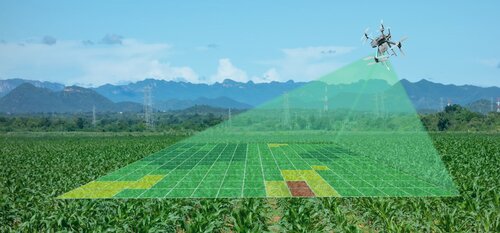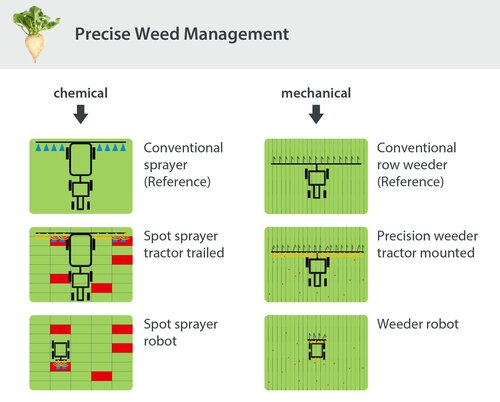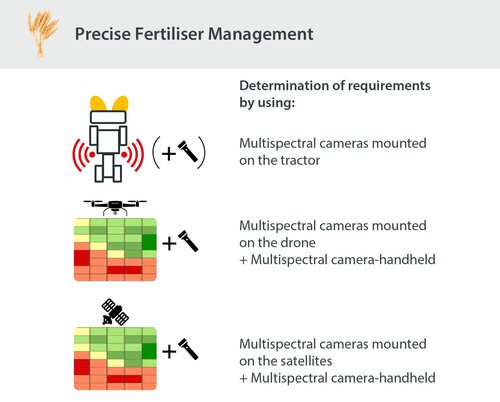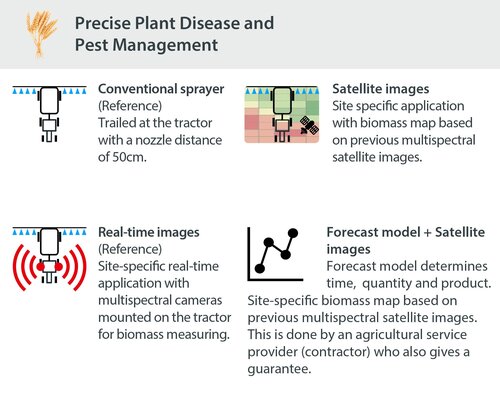Expertise
Digitalisation in Crop Production: Savings Potentials and Profitability
Philipp Hölscher, Thomas de Witte | 12.05.2023
Digitalisation in arable farming is associated with great hopes for more sustainable crop production. But how high are the costs and what benefits can be expected from the technologies available in the medium term? The Thünen Institute has investigated these questions.
On the way to more sustainable crop production, great hopes are placed on new digital technologies. However, it is unclear how high the savings potentials of new digital technologies are and under what conditions the technologies can be used profitably. Against this background, the Thünen Institute has carried out a project to analyse the costs and benefits of digital systems what are available on the market and those that will soon be on the market in the areas of
- "Precise Weed Management",
- "Precise Fertiliser Management" and
- "Precise Plant Disease and Pest Management".
The results were discussed in several validation workshops with experts from industry and science.
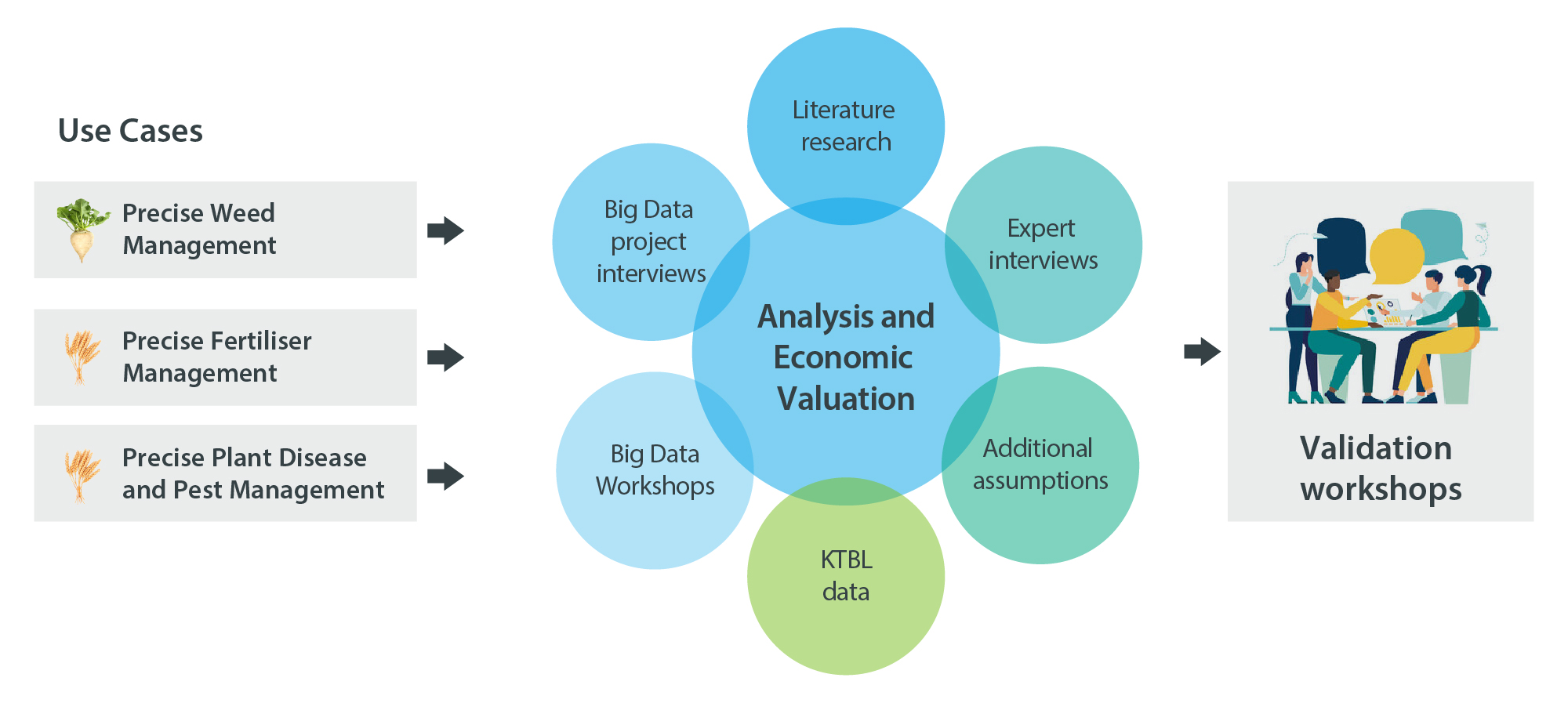
Precise Weed Management
To analyse the costs and benefits of more precise weed management, chemical and mechanical methods were considered. For the chemical methods, a conventional field spray was compared with a tractor-trailed and an autonomous spot spraying system. For mechanical methods, a conventional tractor-mounted row weeder was compared with a tractor-mounted precision weeder and a weeder robot.
The results show that current spot spraying approaches have a savings potential for leaf-active herbicides in the range of about 50-70 %, in some cases even up to 90 %. Currently, they are only economical in crops with high herbicide costs, such as sugar beet or certain special crops. There is potential for cost reduction if the systems are also used in crops with different application times, such as rapeseed. The savings potentials rise with increasing spatial resolution of the application technology. With this background, nozzle distances of less than 10 cm are used in recent developments, which work close to the crop with special shields.
On the other hand, precision weeders, which can also work within the rows between the individual crops, are especially profitable in organic farming and in special crops, where they can make significant savings in labour costs. In conventional farming, the total cost of mechanical methods is still significantly higher than that chemical crop protection methods. In sugar beet cultivation, for example, they are almost four times higher.
Precise Fertiliser Management
For more precise fertiliser management, systems based on multispectral cameras on tractors, drones and satellites were compared with each other.
The results of the analyses show that the determination of nitrogen requirements with multispectral cameras on drones and satellites is an option, especially for very heterogeneous sites, as the differences can be sufficiently differentiated here. Fertilisation with application maps based on satellite images offers a favourable and low-risk entry into site-specific fertilisation, even for smaller farms, due to the low fixed costs. The use of drones, on the other hand, requires a higher investment and more time to fly and analyse the data. On more homogeneous and high-yielding sites and farms with large field sizes, tractor-mounted multispectral camera systems often offer the better cost-benefit ratio. They are easier to integrate into the farm routine and are not dependent on weather conditions.
Precise Plant Disease and Pest Management
Forecast models are used to estimate the probabilities of pest infestations. If the probability is low, complete treatment can be omitted. Thus, there is a corresponding potential for saving on plant protection products. However, the accuracy of these predictions is currently in the order of 85%. Therefore, there is often the approach of using weather and climate data recorded over a smaller area in order to increase the accuracy of forecast models, at least to a limited extent.

